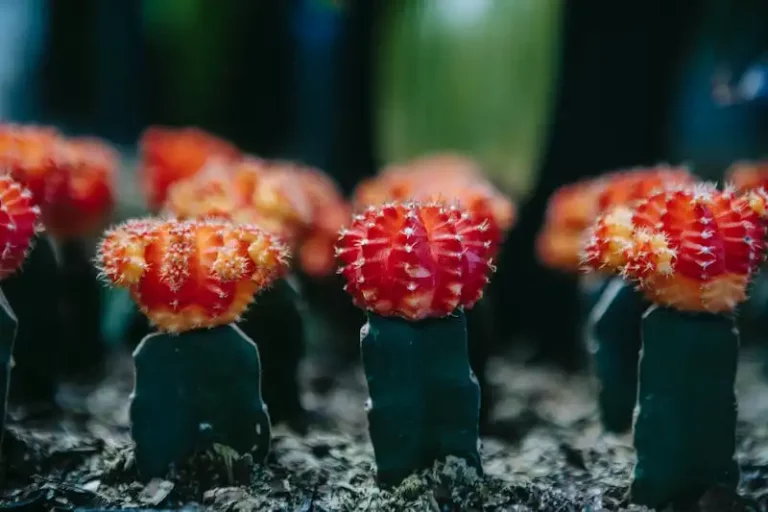Hellebores- also known as Lenten roses, are beautiful plants that can add a touch of elegance to any garden. They come in many cultivars and species, each with its own requirements for proper health and flowering. If you are an avid gardener, you’ll be thrilled to know that propagating hellebores is not only possible, but also quite easy.
Propagation can be done in several ways: through division, cuttings, or seeds. Each method has its own timing and requirements, but with a little bit of work, you can establish new hellebores in your garden in no time.
One of the easiest ways to propagate hellebores is through division. In early spring, when the plants are still dormant, dig up the clumps and carefully separate them into smaller sections. Make sure each section has at least one node and is covered in foliage. Prepare the new planting site by thoroughly cleaning the area and removing any weeds or debris, then fork over the surface to loosen the soil. Plant the divisions at the same level they were growing before and water thoroughly.
If you prefer to propagate hellebores from cuttings, you’ll need to wait until the plants have finished flowering and the foliage has become more lax. Take a sharp knife or pruners and cut off a 6-inch section of stem, making sure there are at least two pairs of leaves on it. Fill a planting tray or pot with a mixture of perlite and peat moss, and stick the cutting into the mix, making sure it is tight enough to support the cutting but loose enough to allow roots to penetrate. Water well and place the tray or pot in a shaded area or under mist. Keep the soil consistently moist until roots form.
Propagating hellebores from seeds is a bit more complex, but it can be very rewarding. Collect the seeds from the plants in late spring or early summer, when the seed pods have turned from green to brown and start to split open. Clean the seeds and sow them in a prepared seed bed. Make sure the bed is in a spot that receives indirect or dappled sunlight and is sheltered from strong winds. Cover the seeds with a thin layer of soil and water gently. Keep the bed moist and wait patiently for the seeds to germinate, which can take several weeks to a few months.
Whether you choose to propagate hellebores through division, cuttings, or seeds, proper timing and site selection are crucial for their success. Take the time to prepare the new plants and provide them with the suitable conditions they need, and you’ll soon have a thriving hellebores garden that will bring you joy year after year. And if you need any help along the way, click here to find a propagation kit that can make the process even easier.
Hellebores Propagation Guide
Hellebores propagation can be an exciting process that allows you to expand your collection of these beautiful and unique plants. Whether you’re a seasoned gardener or just starting out, propagating hellebores is a rewarding endeavor.
When it comes to propagating hellebores, timing is key. The best time to propagate hellebores is in late winter or early spring, just as the plants begin to emerge from their winter dormancy. At this time, the hellebores are actively growing, making it easier for them to establish roots.
One of the easiest and most popular methods of propagating hellebores is by taking root cuttings. To do this, select a healthy hellebore plant, and carefully dig around the base to expose the root-ball. Using a clean garden fork or hand fork, gently lift the plant out of the ground, being careful not to damage the roots.
Once the hellebore is out of the ground, carefully clean the root-ball, removing any excess soil or debris. Using a sharp knife or pair of secateurs, divide the root-ball into smaller sections, ensuring that each section has at least one node.
Prepare a suitable compost mix, which should be well-draining and consistently moist. Fill a propagation tray or container with the compost mix, and place the root sections into the compost, leaving the leaf stems exposed. Cover the tray or container with a clear plastic lid or a plastic bag to create a humid environment.
Place the tray or container in a shaded area with indirect sunlight. Hellebores are usually found in shaded areas in nature, so it’s important to replicate these conditions when propagating. Positioning the tray or container under trees or in a shaded part of the garden is ideal.
During the propagation process, it’s important to keep the compost mix consistently moist, but not waterlogged. The humidity created by the cover will help to keep the root sections hydrated. Check the moisture levels regularly and water as needed.
After a few weeks, you will start to see new growth emerging from the root sections. Once the new growth has reached a suitable size, carefully lift the young plants from the propagation tray or container, being careful not to damage the delicate roots. Replant the young hellebores into individual pots or directly into the garden.
As with any type of propagation, it’s important to select the desired characteristics you want to propagate. Hellebores come in a wide range of colors and flower shapes, so choose the plants with the specific traits you’re looking for.
In conclusion, hellebores propagation is a rewarding and enjoyable process. By following these techniques, you can easily propagate hellebores and expand your garden with these beautiful and hardy plants.
What You’ll Learn
In this article, you’ll learn how to propagate hellebores using various methods such as germinating seeds, dividing root-ball, and taking cuttings. You’ll discover the different steps involved in each method and where to find the best hellebores for your garden.
You’ll find out how to collect hellebore seeds and how to prepare them for propagation. You’ll learn about the importance of using compost heaps to ensure successful germination. You’ll also understand when and how to plant hellebore seeds, including tips on keeping the moisture level just right to prevent rotting.
Once you’ve mastered seed propagation, you’ll delve into dividing hellebores. You’ll learn how to identify sections with desired characteristics and how to separate them from the main plant. You’ll also discover the best time of year to perform this task and how to ensure the divisions have enough nutrients to thrive on their own.
For those who prefer a quicker method, you’ll learn how to take hellebore cuttings. You’ll learn how to choose the right stems and the proper technique for cutting and planting them. You’ll also discover the importance of choosing the right potting mix and providing the right amount of sunlight and humidity to ensure successful growth.
Whether you’re a seasoned hellebore enthusiast or just starting out, this article will provide you with the knowledge and techniques to propagate hellebores with confidence and enjoy their beautiful blooms year after year.
What are the different methods for propagating hellebores
There are several methods for propagating hellebores, a popular and beautiful flowering plant native to Europe and Asia. Whether you’re a novice or experienced gardener, you can successfully propagate hellebores using various techniques.
1. Seed propagation: Propagating hellebores from seed is one of the most common methods. When the seed pods are fully mature, collect the seeds and sow them on the surface of a warm and moist seed compost. It is recommended to soak the seeds in water or scrape the outer layer before planting. Keep the planting location warm and shaded as these seeds take time to germinate, which could range from a few weeks to a few months. Once they germinate, the seedlings can then be potted or transplanted into the garden.
2. Division: Division is another method used for propagating hellebores. This involves dividing the plant into smaller sections and replanting them separately. It is best to do this in early spring when the plants are in active growth. Carefully dig up the established clumps, making sure to keep as many roots as possible. Then, using a sharp knife or shears, divide the clumps into smaller sections, ensuring that each section has enough roots. Replant the divisions in well-prepared soil and water thoroughly.
3. Carpels propagation: Propagating hellebores through carpels is a more advanced technique and requires some patience. Carpels are the seed pods found on the plant. To propagate hellebores this way, wait until the carpels are open and the seeds are visible. Carefully remove the seeds from the carpels and sow them on a moist seed compost. Cover the seeds with a thin layer of moss or vermiculite. Keep the planting area moist and shaded. Over time, the seeds will germinate, and new plants will start to grow.
Regardless of the specific method you choose, it is important to keep in mind the requirements of hellebores. These plants tend to prefer a partially shaded location with well-drained soil, rich in organic matter. Avoid planting them near trees, as the competition for nutrients and moisture can hinder their establishment. Additionally, hellebores are generally disease-resistant but can be susceptible to black spot or leaf spot. Keep an eye out for any signs of disease and treat accordingly.
In conclusion, propagating hellebores can be done successfully through seed propagation, division, or carpels propagation. Depending on your preferences and gardening skills, you can choose the method that suits you best. By following the guidelines mentioned in this article, you’ll be on your way to growing your own beautiful hellebores in no time!
When is the best time to propagate hellebores
Hellebores, also known as Lenten roses, are beautiful flowering plants that can be propagated through various methods such as seedlings, divisions, and cuttings. Understanding the best time to propagate hellebores is key to ensuring successful establishment and growth.
The best time to propagate hellebores is between late winter and early spring, typically in the middle of February or early March. During this time, hellebores are in the dormant phase and are best suited for propagation. As hellebores prefer shaded or partially shaded areas with well-drained soil, it is important to select a location that provides the right level of sunlight and soil conditions.
To propagate hellebores through seedlings, start by selecting mature seeds from the desired hellebore plants. Sow the seeds on the compost surface and lightly cover them with a thin layer of soil, approximately 1 inch deep. Keep the seeds well watered and provide a shaded environment to promote germination. It can take several weeks or even months for the seeds to germinate and establish as seedlings.
If you prefer dividing hellebores for propagation, choose established plants that have formed tight clumps or divisions. Carefully dig up the plant and use a sharp, clean tool to divide the clumps into smaller sections. Each division should have at least one lividus, or “eye,” which is the growing point of the hellebore. Replant the divisions in the desired location, making sure to provide proper spacing and soil conditions.
Another method for propagating hellebores is through cuttings. Select healthy stems that are about 3-4 inches long and preferably have at least two sets of leaves, ensuring that the cuttings are taken during the dormant phase. Dip the cut end of the stem in a rooting hormone to promote root development. Plant the cuttings in a well-drained growing medium and keep them in a shaded or partially shaded area. It may take several weeks or even months for the cuttings to root and establish as new plants.
Whether you choose to propagate hellebores through seedlings, divisions, or cuttings, providing the necessary conditions and following proper techniques are key to success. Hellebores require well-drained soil, partial shade, and regular watering. During the establishment phase, it is important to keep an eye out for any signs of stress or damage and take appropriate measures to ensure the health of the propagated hellebores.



